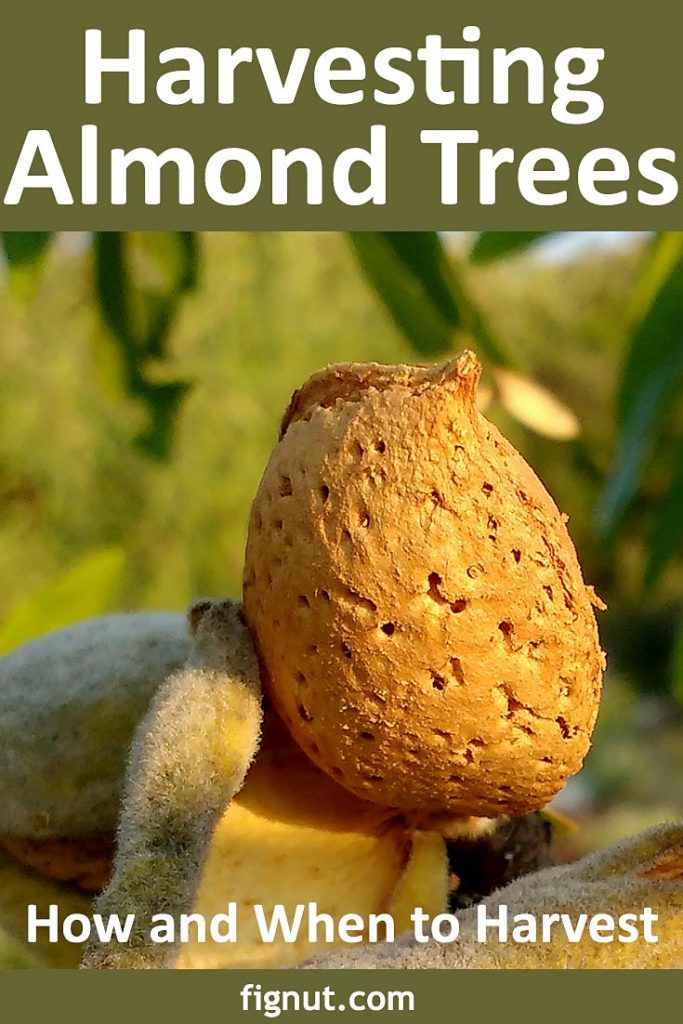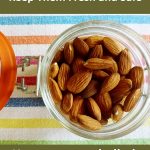I have only eight almond trees that I planted a few years ago. At present they are four years old trees that don’t produce yet a lot of almonds nuts to harvest. That’s why I pick them manually. In the last few years since I have them, I learned some important things about when and how to do harvest them properly. If you are wondering when and how to harvest your almond tree, here is the info you need to successfully harvest your own homegrown nuts.
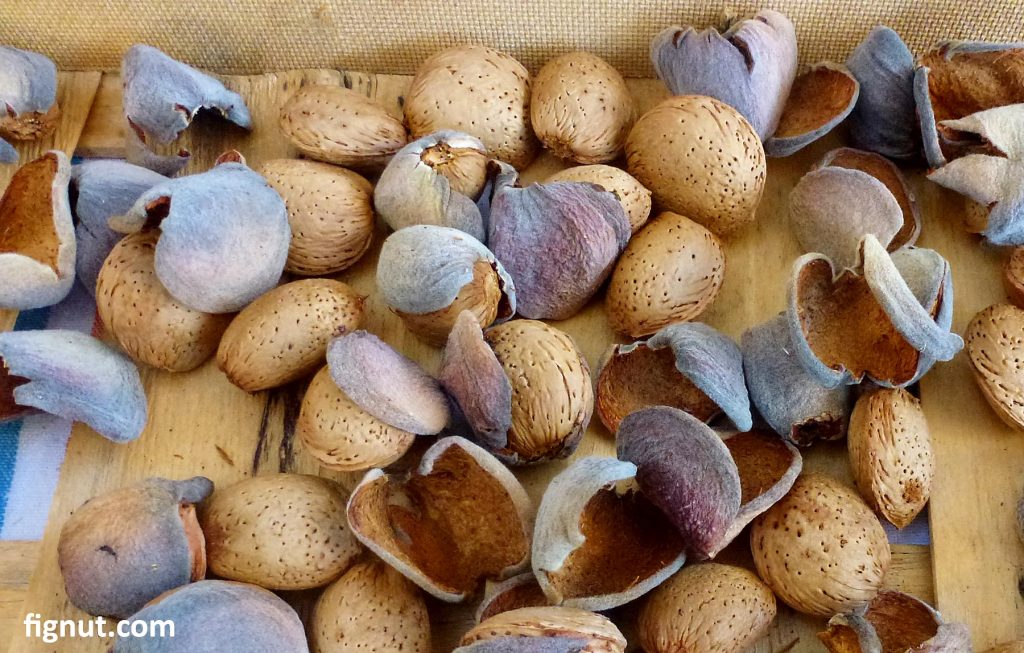
Table of Contents
When to Harvest Almonds – Right Harvesting Time
This is the most important step in harvesting almonds. Choosing the right time is very important as if you choose the wrong time to harvest your almond nuts will not be as nutritious etc
Almonds here in the Mediterranean are harvested in August and September. The exact time depends on the particular tree variety, of micro-location as well as of current climate and weather. On another side of the globe, (Australia, New Zealand, South Africa) it is usually February and March.
Three Stages of Almonds
The first stage
In this stage, the almond hulls are completely closed as in the below photo. Right here where I live in the Mediterranean, this is sometime in early June, almonds are not ripe nor ready to harvest. If you pick them up and open them now, almond nuts will be green and sour. Leave them on the trees for a longer time, they will ripe several weeks from now.
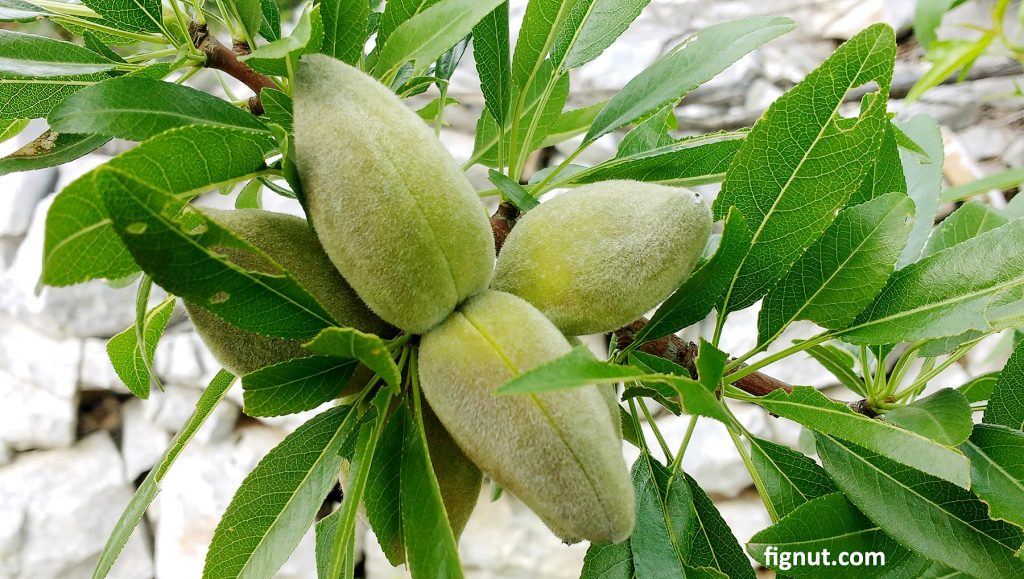
Second Stage
A few weeks later, (it is here sometime in mid-July), your almonds will look like in the below photo. The hulls of the almonds will start to split open. Through the narrow split, you will see the wood-like almond shell. This is the time when inside the shell the nut (kernel) starts slowly to dry as it is now exposed to the sun and wind.
At this stage, the almonds are almost ready. Almond hulls are split open but are still sticking to the shell so they are not yet ripe. If you pick them now, you will have trouble removing the complete hulls apart from the shells as they are still sticking to it.
If you open the shell apart, the almond nuts inside are still not ready to eat, they feel like bit gummy, sticky and chewy. (I made this mistake in my first harvest!)
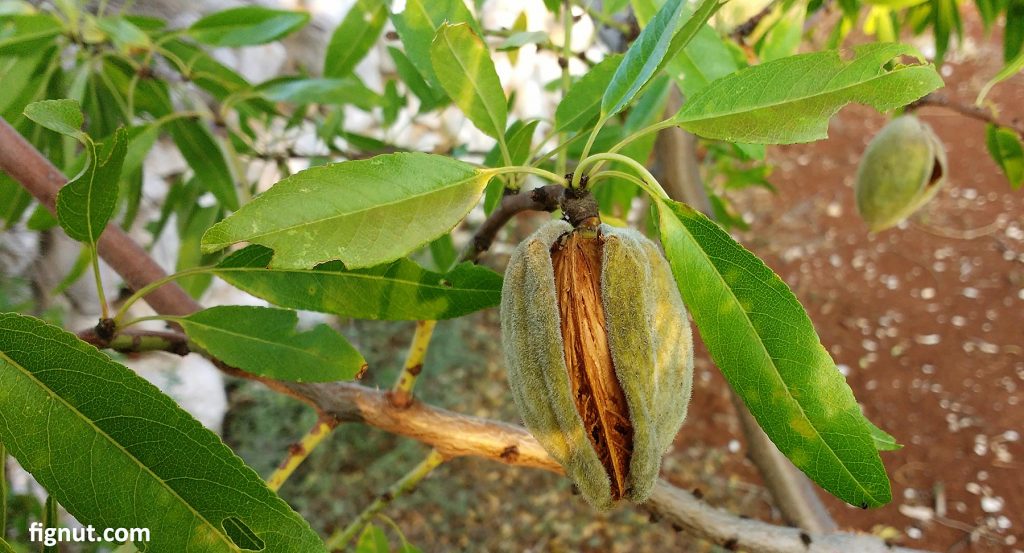
Third Stage
Hold your breath for a little longer and give them another week or two on the tree. Bear in mind that at this stage, nuts are already attractive to large birds and squirrels so make sure you are guarding them properly as you may lose part of your harvest.
Day by day, a drupe (hulls) on your almonds are getting completely opened and their color change from green to yellowish. This is the right time to harvest, your almonds are ripe and ready – they will look like in the below photo. If you don’t pick them now, pretty soon, they will fall from the tree and eventually rot.
Important note: While checking the progress of your nuts, make sure you always start from the top of the tree. As the top of the tree is most exposed to sunlight, this is the area where hull split will first begin. The top of the tree is also easier to see from the distance so large birds will try to reach ripe almonds before you!

Recognizing Parts of Almond Nuts
The Hull or Drupe
The hull or drupe of the almond has a green to grayish coat. Later when dried it changes color to yellow and eventually to brown and violet. While on the tree it looks something like a thick woolly or velvety leather coat, similar to a peach or apricot. When dry its coat is much thinner and velvety bits are partly lost.
This is a photo of the drupe / hull of the almonds that is still on the tree:

Here is a photo of the almonds where the dried hull or drupe is still on the shells:
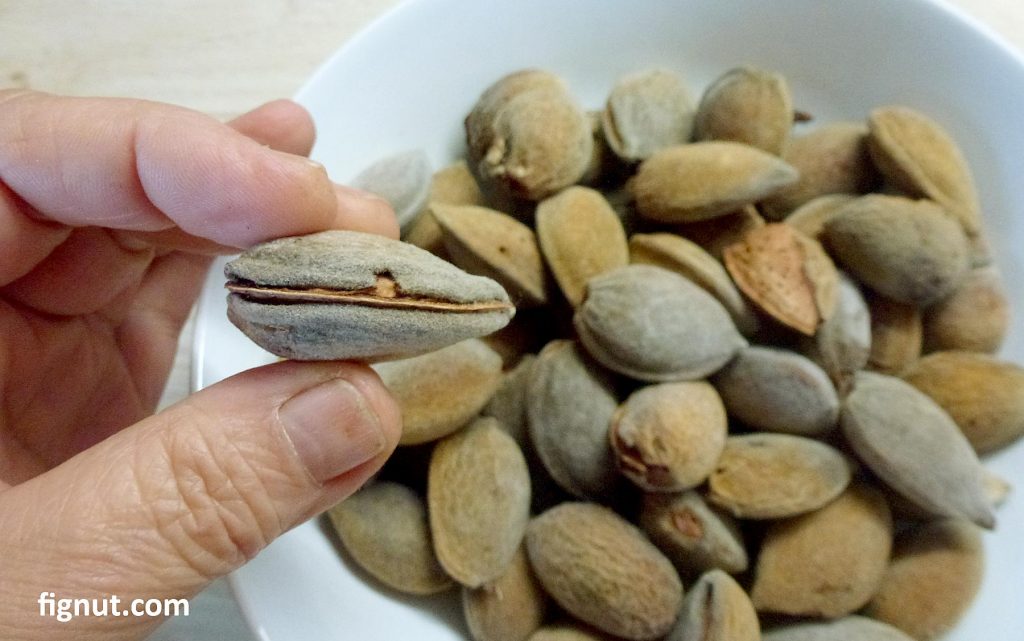
The Shell
When you remove the hull, inside of the drupe is a woody shell. It is usually very hard and you need a nutcracker or hammer to split. In this photo, I hold wood-like shells of almonds that contain nuts (or kernels) inside, parts that we eat:
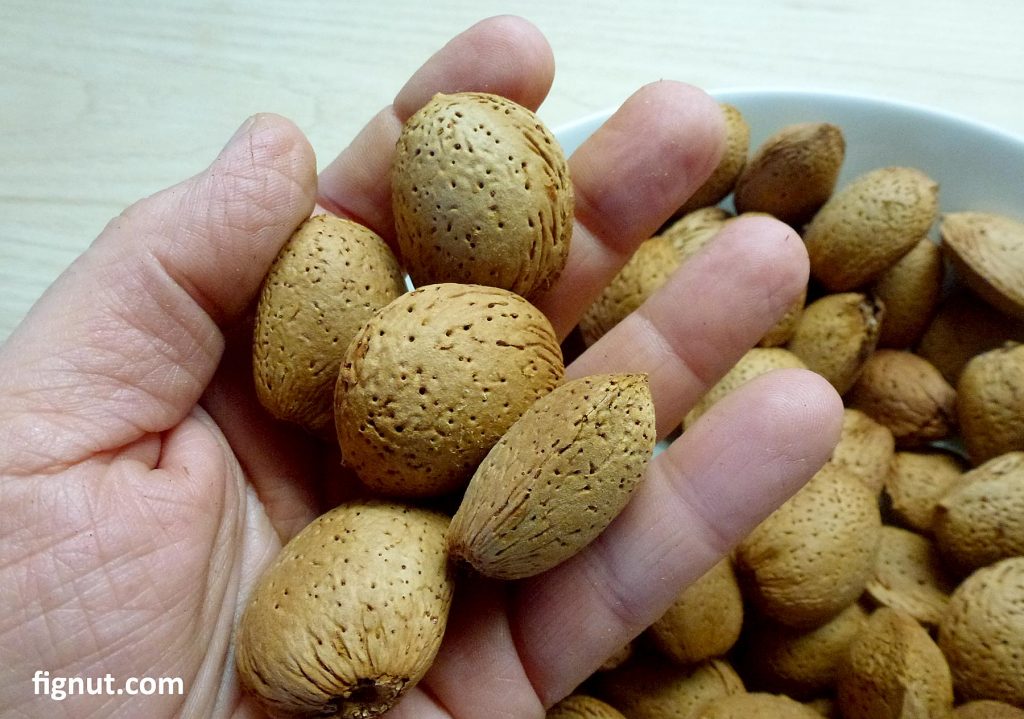
The Nut / Kernel
Inside of that shell is where you find the actual nut or kernel, which is edible. This is a plate with almond kernels or nuts, the bits of almond that we actually eat, sometimes called ‘meat of an almond’:
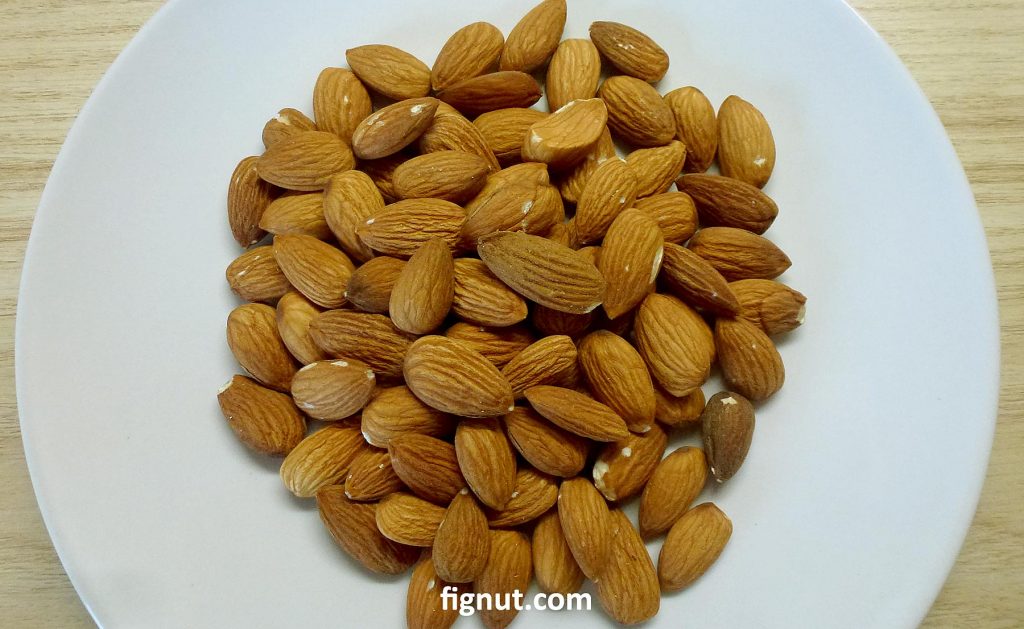
How to get Almonds off the Tree
Depending on how big is your tree, you can either just pick them manually or, in case you have a lot of almonds, shake the tree branches to let nuts fall on the floor. Or, if you prefer, you can leave them on the tree and let them fall on the ground in their own time.
If you choose to shake the tree or let the almonds fall it the ground it is a good idea to use some cotton or plastic sheet or even tarp and spread it below the tree. Once all nuts are on the ground you just pick four corners of the sheet and make it into the large bag and all your almonds are harvested.
Use a long stick such as a broom handle or hiking stick to shake nuts off the branches. Some people use rubber mallets but I find it distressing for trees and would not recommend it. My trees are still young and on the smaller side so I harvest my almonds manually.
This is how my last year harvest looked like:
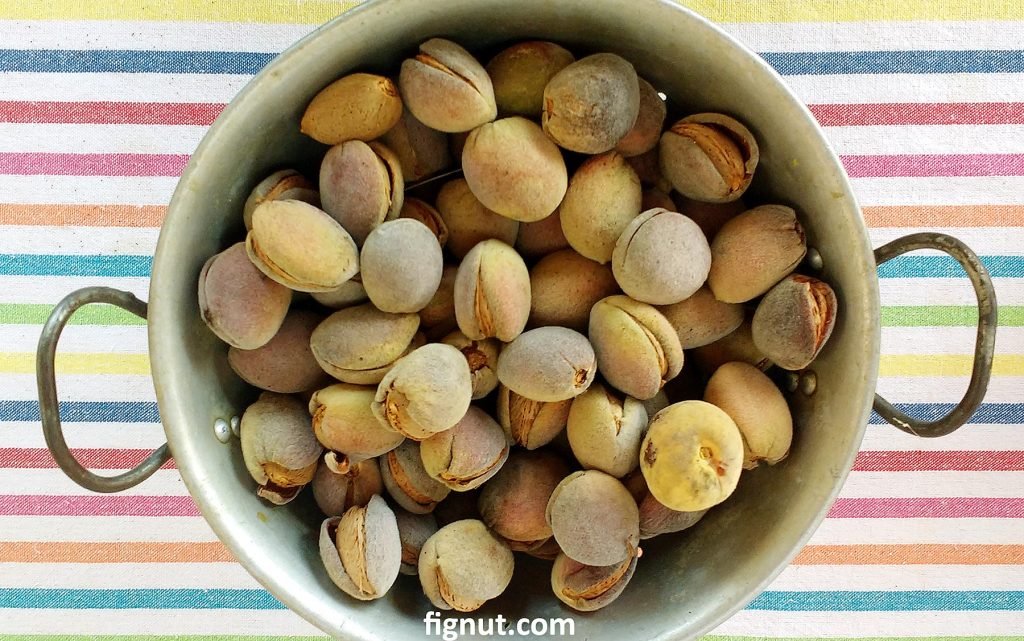
Hulling and Drying Almonds
As soon as you harvest your almonds, remove the hull from the shells. It is easy to peel it off with your hands if you harvested at the right time (see above how I made a mistake the first time).
Put your almond shells in the drying tray ( I use disposable fruit boxes) as in the below photo, and leave it in the sunny and windy position for drying. I usually keep them on the roof of my shed. Make sure you take it inside the house during the night because of dew and possible rain.
I usually keep them exposed to the sun for about 3 to 4 weeks but that depends on humidity and particular microclimate conditions. Bear in mind that keeping your almonds to dry for longer will not make any damage to your nuts. I have never seen overdyed nuts.
How to Check if your Almonds are Dry
To check if almonds are dry, first, shake the shell and listen if you can feel the nut moving inside the shell. If yes, then crack the shell of one or two almonds (use hammer or nutcracker). Pick the nut and taste it – if it’s too gummy or chewy it is not dried yet. It should be frail and crispy, easy to break and chew.
This is the photo of my almond nuts that I was preparing for drying in the fruit box:
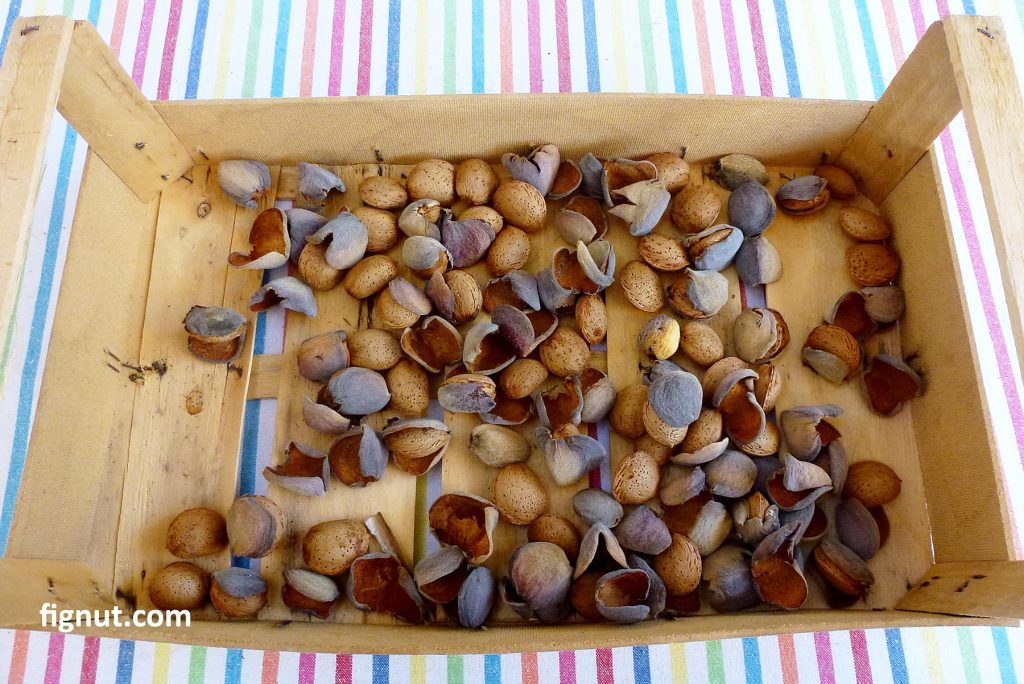
Note: You don’t have to remove all shells at once from your nuts as you can store almonds in their shells for many years. In my next post, I show you what is the best storage options for shelled and unshelled almonds as well as how to shell almonds at home
